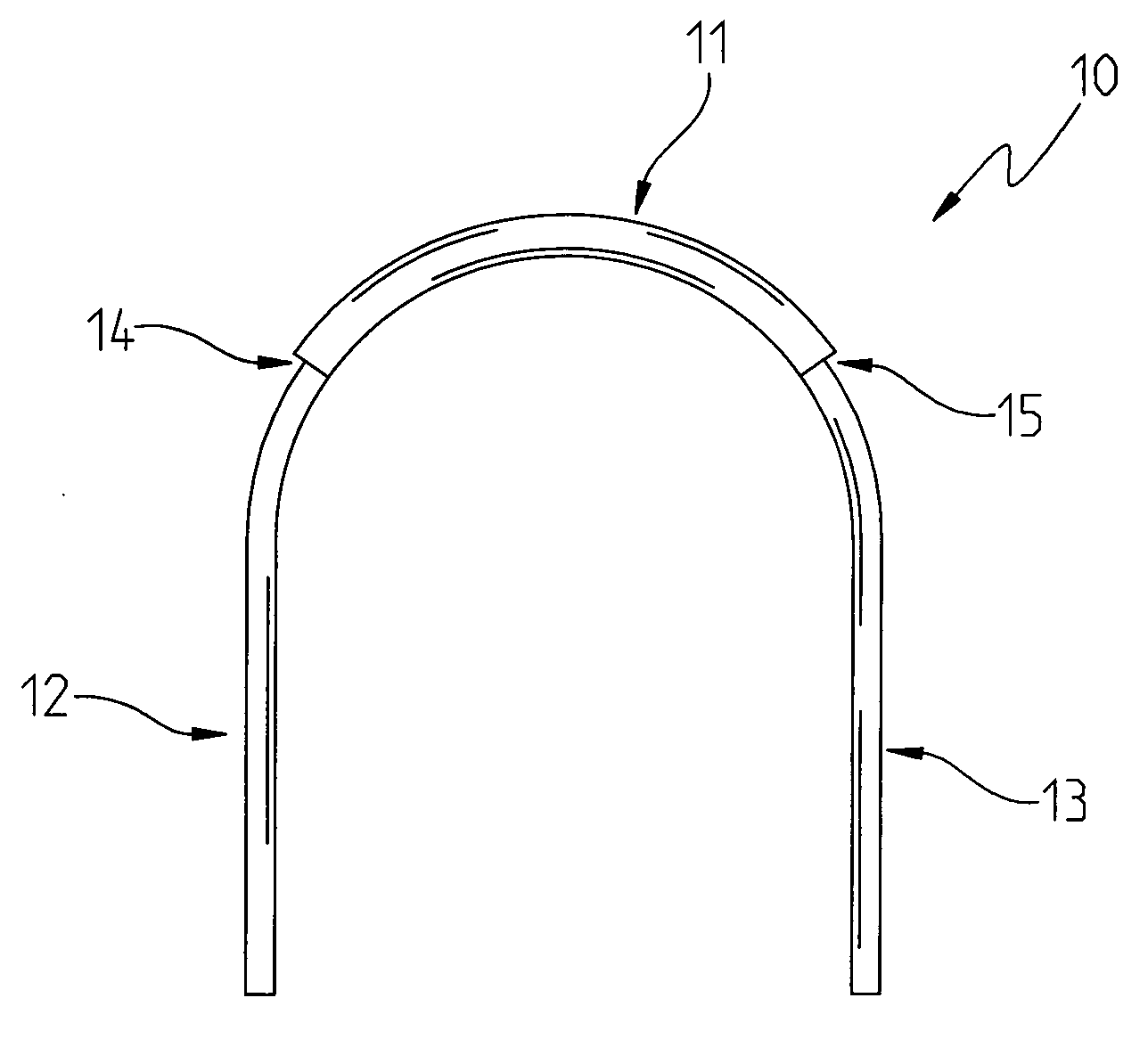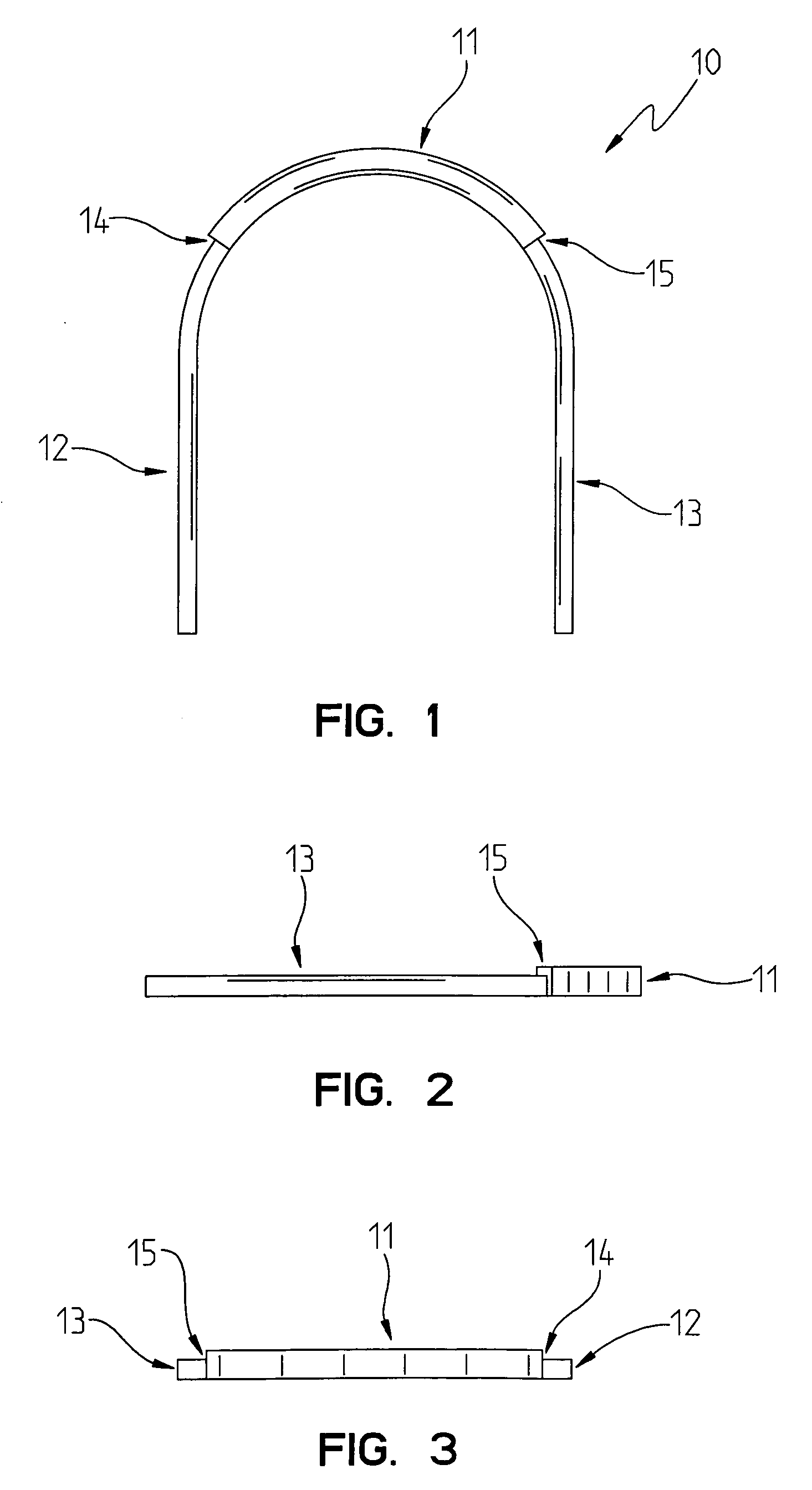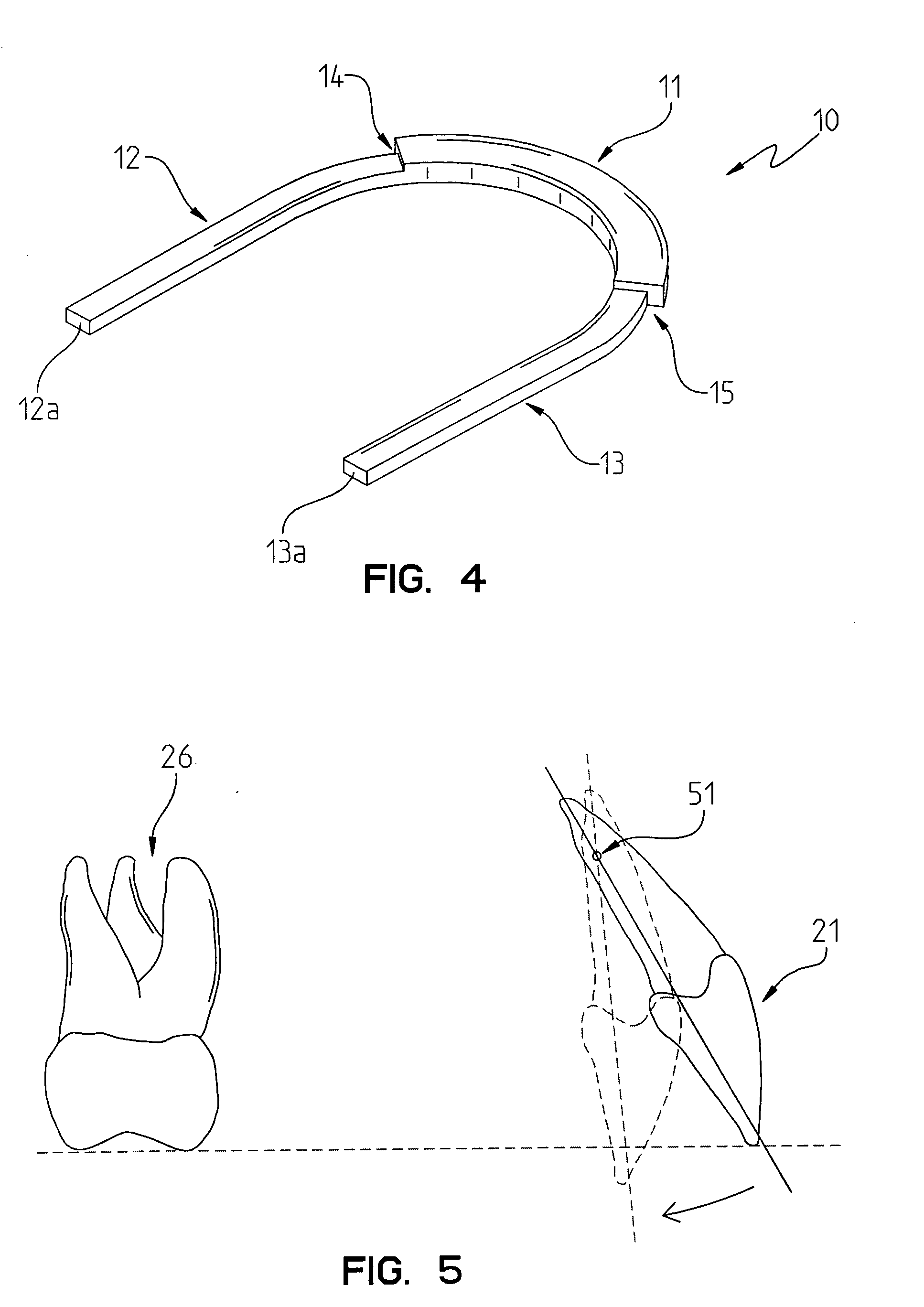Differential Archwire
a different type of wire technology, applied in the field of different types of wires, can solve the problems of large space between small cross-sectional wires, interfere with the user's bite, and generate too much friction on the slots of posterior teeth brackets, etc., and achieve the effect of eliminating the risk of wire indentations, less pressure, and less pressure on the wir
- Summary
- Abstract
- Description
- Claims
- Application Information
AI Technical Summary
Benefits of technology
Problems solved by technology
Method used
Image
Examples
first embodiment
[0075]As best shown in FIG. 1, the differential archwire 10 of the present invention is shown as including an anterior portion 11, a first posterior portion 12, and a second posterior portion 13. When inserted in the mouth, the anterior portion 11 is disposed adjacent to the anterior teeth, such as the central and lateral incisors. The first 12 and second 13 posterior portions are disposed adjacent to the posterior teeth, such as the canines, the first and second bi-cuspids (first and second pre-molars), and the first, second and third molars.
[0076]If one views the dental archwire 10 from the top, as shown in the top view of FIG. 1, the first posterior portion 12 will be inserted into the left portion of the mouth, and that the second posterior portion 13 of the dental archwire 10 will be disposed in the right portion of the mouth.
[0077]As will be observed from the drawings in FIGS. 1-4, the anterior portion 11 is generally thicker than the posterior portions 12, 13. Another way to ...
embodiment 300
[0113]In the embodiment 300 of differential archwire 300 shown in FIG. 16-31, for the same amount of linear deflection of the wire (f in the above formula) and for the same length of wire (L in the above formula), the posterior segments (18×22) generate a force response that is 45% less than the force response generated by the anterior segment 311 (21×25) due to the differences in cross-section sizes of the segments 312, 313, 311.
[0114]The force response of a deflected orthodontic wire acts at the wire-bracket interface. More precisely, during incisor retraction, this force response of the deflected wire is exerted in a perpendicular fashion (normally) to the direction of backward sliding of the wire through the brackets. The direction of the force response of the deflected wire is indicated generally by arrows 74A, 70A, 66A and 62A shown in FIG. 31. So, the force response of the deflected wire produces friction, that hampers the backward movement of the wire (and of incisors).
[0115...
embodiment 310
[0131]The plane in which the anterior segment 311 resides is disposed generally above the level of the plane in which the posterior segments 312, 313 reside. Rather than using a bend to differentiate the level between the anterior section 311 and posterior section 312, 313, in the embodiment 310 shown in FIG. 17, the non-coplanarity is achieved by attaching the underside surface of the posterior end portions 323, 325 of the anterior segment 311 to the upper side surfaces of the proximal end portion 322, 324 of the respective posterior segments 312, 313. This overlayed transition section 314, 315, as described above, is an area where the thickness of the archwire, due to the combined cross-sectional areas of the anterior segment 311 and posterior segment 312, 313 is greater than in any other place within the archwire. This results in the transition area 314, 315 having the highest flexural rigidity of any portion of the archwire 310.
[0132]An alternate and preferred embodiment archwir...
PUM
 Login to View More
Login to View More Abstract
Description
Claims
Application Information
 Login to View More
Login to View More - Generate Ideas
- Intellectual Property
- Life Sciences
- Materials
- Tech Scout
- Unparalleled Data Quality
- Higher Quality Content
- 60% Fewer Hallucinations
Browse by: Latest US Patents, China's latest patents, Technical Efficacy Thesaurus, Application Domain, Technology Topic, Popular Technical Reports.
© 2025 PatSnap. All rights reserved.Legal|Privacy policy|Modern Slavery Act Transparency Statement|Sitemap|About US| Contact US: help@patsnap.com



